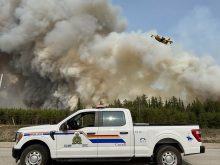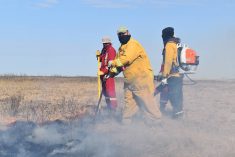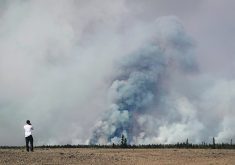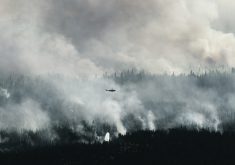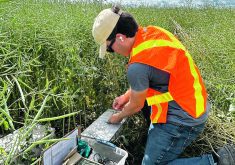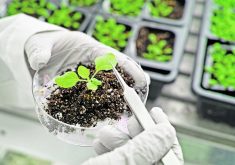The scars of Oct. 17, 2017, won’t soon fade for those caught in prairie wildfires that night.
The Hargrave family lost 35-year-old James, a rancher and volunteer firefighter with the Walsh, Alta., department, in an accident during the fire near Hilda, Alta.
Father and son, Ron and Evan Wedrick of Carmichael, Sask., were severely injured in the fire near Tompkins, Alta., but are now home. Eddie Riehl of Richmound, Sask., was also burned.
“They told us it would be six months to a year,” said Twila Wedrick, Ron’s wife and Evan’s mother, who speaks for the family.
Read Also

Feds propose overhaul of chronic wasting disease control program
Chronic Wasting disease control program getting updated by Canadian Food Inspection Agency with feedback encouraged from producers.
“Ron was out in 22 days and Evan was out before three months.”
Other stories in this Special Report:
- Prairies brace for new fire season
- A land heals after devastating fire
- Army base improves communications after fire
- Researcher studies how forages recover after fires
However, they remained in Calgary for ongoing daily outpatient treatment, and Evan finally came home in late April.
It’s been a long haul since that night, described eloquently by family friend Don Connick during the Agricultural Producers Association of Saskatchewan annual meeting last December.
He told a hushed crowd how Evan was fencing with his grandfather when they saw smoke. Ron soon arrived from his work in the oil patch and he and Evan hooked up a sprayer tank filled with water to help out about 25 kilometres away.
“It was now dusk and a short time later the wind switched and engulfed the truck that Evan and Ron were driving in a black fog of dust and smoke and ash,” Connick said.
They ran off the road, and the truck got hung up in the ditch.
“When the flames began to lick up the side of the truck, they decided their best chance was to abandon the vehicle and run through the wall of flames on to the already burned ground,” Connick said.

“What they didn’t see in the blackness was the eight-foot-high chain-link bison fence that was blocking the direction they were going to run.
“Both ran full speed into the fence and were knocked down. Only seconds later the wall of fire ran right over top of them.”
Ron was wearing fire retardant coveralls required at his oil field job. He also had a cellphone with an emergency locator. He called a friend to rescue them but the friend was similarly surrounded by flames and instead called the ambulance. The emergency locator alerted the ambulance to their location.
First taken to hospital in Maple Creek, Sask., the pair was eventually air lifted to Calgary from Medicine Hat. The STARS helicopter wasn’t able to fly in the conditions that night.
Ron suffered burns mainly to his hands and face and is now back to work, Twila said.
Evan was burned over 65 percent of his body and has had numerous surgeries to graft skin. His mother said he will need more in the future.
She said his healing has been tougher because he is younger.
“His skin tightens way more than an older person,” she said.
“He’s had some trouble with his mouth and nose with the tightening. Hopefully over the years it will lessen, but right now his body is trying to heal and get better.”
Evan lost some fingertips and has had a chance to try out accessories that allow him to open a bottle of water and put the cap back on.
Clearly, his jobs at events like branding will have to be different from now on, but Twila said he hopes to be back at work at his oil field job by the end of this month.
The family thanks the community for its fundraising efforts and help with moving cattle and other farm jobs that had to be done.
She admits that the dry windy conditions this spring are scary, and she expects everyone will prepare and plan after what happened last fall.
“Everybody went out there to fight together, they got hurt together, we’re all healing together,” she said.
“Everybody is learning from this.”




